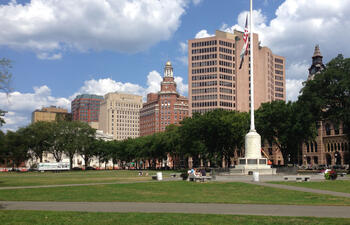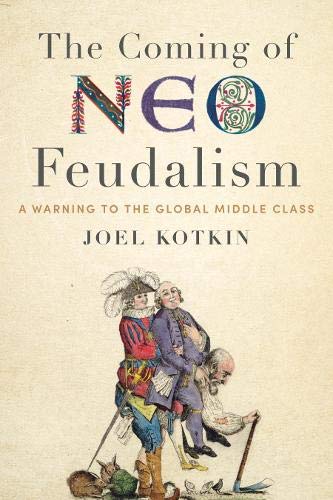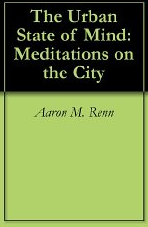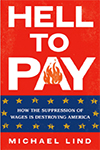
Ryan Pucyzki, publisher of the City of Yes Substack newsletter, published an excellent (and timely) article yesterday about New Haven, CT’s attempt to reinvent itself through its use of federal urban renewal funding in the two decades following World War II. It was timely because yesterday I also published an article on the contemporary origins of today’s distressed urban neighborhoods – the “hood” – and note that urban renewal of the 1950’s and 1960’s was a public policy, among many in the 20th century, that played a huge role in creating the “hood” as we know it today. I think it’s important to link our pieces together and consider how policy often creates unexpected outcomes.
Ryan does a great job of summarizing the midcentury transformation of New Haven, and so many other American cities. Tectonic shifts in global politics and the economy after World War II made the U.S. the premier industrial nation in the world. At the grassroots level in cities like New Haven, city leaders envisioned continued demographic and economic expansion. But the rise of suburbia on the city’s periphery was deemed a threat and caused city leaders to rethink the possibilities of cities like New Haven. In New Haven’s case, the thinking was to replace the old with the new. Provide a new-look city to people, and they’d return.
We can lament the damage that urban renewal wrought on cities like New Haven. Yes, it was fundamentally anti-urban.
But the destruction of New Haven through urban renewal produced two significant outcomes. One, it produced winners – city dwellers who took advantage of urban renewal to relocate in suburbia. Pucyzki’s quote here captures how winners viewed urban renewal:
“(urban renewal) only hastened white flight: middle-class white people left the city at five times the rate of non-white people, ‘who could not afford—and were not welcome in—white suburbs.’ ”
Two, the desire to remake urban environments in a modernist fashion, to compete with expanding suburbia, actually made city living less desirable. New highways slashed through old neighborhoods, destroying viable areas and creating isolated neighborhood pockets. Privately owned low-rise multifamily buildings were razed and replaced with mid-rise and high-rise public housing towers surrounded by wide expanses of greenery. according to Pucyzki:
“Non-white people entered public housing three times as frequently as white people, while displaced white people—more likely to have been homeowners—used their compensation to buy elsewhere. The result was that urban renewal increased segregation, producing the ‘near-total Africanization of public housing.’ ”
Urban renewal was thus an unwitting tool used to create the present-day version of the “hood”.
It’s interesting to look back and consider how people of the time viewed what urban renewal would do for cities. I think urban renewal idealists envisioned a future in which white families would recognize the significant investment being made in their communities and would stick around to reap its benefits. I think they also saw white young professionals would be attracted to contemporary, modernist styles of city living, spurring even more growth. Black families would have expanded and updated housing options, improving living conditions.
The reality, however, is quite different. White families often saw urban renewal as an opportunity to escape the city for suburbia. Black families saw the initial integrationist optimism of urban renewal quickly evaporate. Neighborhoods rapidly destabilized and became more segregated in the process.
Read the rest of this piece at The Corner Side Yard.
Pete Saunders is a writer and researcher whose work focuses on urbanism and public policy. Pete has been the editor/publisher of the Corner Side Yard, an urbanist blog, since 2012. Pete is also an urban affairs contributor to Forbes Magazine's online platform. Pete's writings have been published widely in traditional and internet media outlets, including the feature article in the December 2018 issue of Planning Magazine. Pete has more than twenty years' experience in planning, economic development, and community development, with stops in the public, private and non-profit sectors. He lives in Chicago.
Photo: Downtown New Haven, CT via Wikimedia under CC 3.0 License.












